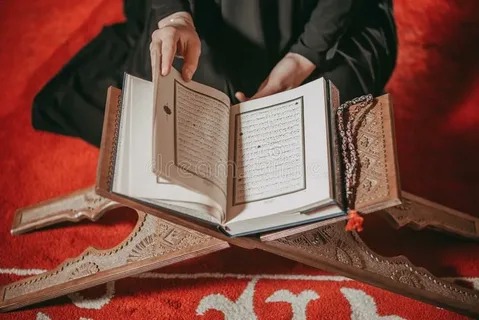The Quran, the holy book of Islam, is revered by millions around the world for its divine guidance and spiritual significance. One of the remarkable aspects of the Quran is its adaptability to different recitation styles, known as Qirat. These Qirat styles have a rich history and contribute to the Quran’s linguistic beauty and depth. In this article on Arabian Tongue website, we will delve into the fascinating world of the different Qirat of the Quran, exploring their origins, significance, and impact on understanding the text.
What is Qirat?

Qirat in islam refers to the various authentic ways of reciting the Quran. These recitation styles have been meticulously preserved and passed down through generations, ensuring the Quran’s accurate transmission over centuries.
Origins of Qirat
The history of Qirat can be traced back to the time of Prophet Muhammad (peace be upon him). He received the Quranic revelations in the Qirat of Hafs from Angel Gabriel, which serves as the most common Qirat style today.
Types of Qirat
The Qira’at al-Saba, or “Seven Recitations,” are the most renowned and widely accepted styles of Quranic recitation. These styles have been meticulously preserved over the centuries and include:
- Hafs an Asim
- Warsh an Nafi
- Qalun an Nafi
- Ibn Kathir an Abu ‘Amr
- Al-Kisai an Abu ‘Amr
- Hamzah an Khalaf
- Ibn ‘Amir an Ya’qub
Each of these recitation styles has its own unique pronunciation and rules, contributing to the rich tapestry of Quranic recitation.
Significance of Different Qirat
The importance of Qirat in the Quran includes several important factors, including:
Preservation of the Quran
The existence of multiple Qirat styles serves as a safeguard against any potential alterations or corruptions in the Quranic text. It ensures the text’s integrity remains intact.
Linguistic Beauty
Each Qirat style brings out distinct linguistic nuances and beauty in the Quranic verses. This linguistic diversity adds depth to the understanding of the Quran.
Regional and Cultural Influence
Different Qirat styles are prevalent in various regions, reflecting the cultural and linguistic diversity of the Muslim world. This allows for a deeper connection to the Quran among diverse communities.
Quranic Recitation Competitions
Quranic recitation competitions often showcase the diversity of Qirat styles, promoting a deeper appreciation for the Quran among Muslims worldwide.
Quranic Teaching
Islamic educational institutions emphasize teaching the Quran in various Qirat styles, allowing students to choose the one that resonates most with them.
Impact on Understanding
Different Qirat species in the Quran affect how the Quran is pronounced and interpreted in addition to:
Varied Pronunciations
The Qirat styles differ in pronunciation, affecting the way certain words are articulated. This can lead to variations in the recitation of verses, contributing to a richer understanding of the text.
Interpretation and Tafsir
Scholars and interpreters of the Quran consider the Qirat styles when providing commentary and explanations (Tafsir). This can lead to different interpretations and insights into the Quran’s meaning.
Spiritual Experience
Listening to the Quran in different Qirat styles can be a profound spiritual experience, evoking different emotions and reflections in the hearts of believers.
The Rules of Qirat

Qirat follows a set of rules that govern pronunciation, intonation, and rhythm. These rules are meticulously studied and practiced by individuals known as Qaris, who dedicate their lives to perfecting the art of Quranic recitation. Some well-known Qaris, such as Sheikh Sudais and Sheikh Mishary Rashid Alafasy, have gained international recognition for their mastery of Qirat.
What is Tajweed?
Tajweed, on the other hand, is the science of proper recitation. It goes beyond the act of reciting the Quran and delves into the finer details of pronunciation and articulation. Tajweed is a systematic study that focuses on the correct enunciation of each letter and vowel in the Quranic text.
The Purpose of Tajweed
Tajweed serves the purpose of elevating the quality of Quranic recitation. It ensures that the words are pronounced as intended, with clarity and precision. Tajweed also enhances the beauty of the Quranic verses, making the recitation melodious and soothing to the ears.
The Rules of Tajweed
Tajweed encompasses a set of intricate rules that cover the proper pronunciation of letters, the lengthening or shortening of vowels, and the rules of nasalization. These rules are essential for achieving the highest level of proficiency in Quranic recitation.
Difference Between Qirat and Tajweed
In the world of Islamic studies, Qirat and Tajweed are two terms that are often heard but not always fully understood. These terms are essential components of Quranic recitation and hold significant importance in the lives of Muslims:
1. Focus and Purpose
- Qirat: Focuses on the accurate and faithful recitation of the Quranic text.
- Tajweed: Focuses on perfecting the pronunciation and articulation of Quranic letters and vowels.
2. Depth of Study
- Qirat: Involves the recitation of the Quran according to established rules.
- Tajweed: Involves a deeper study of the intricate rules of pronunciation and articulation.
3. Practitioners
- Qirat: Practiced by individuals known as Qaris.
- Tajweed: Studied by those seeking to improve their Quranic recitation skills.
4. Goal
- Qirat: Ensures the faithful transmission of the Quran.
- Tajweed: Enhances the beauty and precision of Quranic recitation.
FAQs
Are all Qirat styles equally valid?
Yes, all canonical Qirat styles are considered valid and authentic.
Can one switch between Qirat styles while reciting the Quran?
Yes, individuals may choose to recite the Quran in different Qirat styles, depending on their preference.
Are there any regional variations in Qirat styles?
Yes, regional variations in pronunciation can be observed in certain Qirat styles due to cultural influences.
Is it essential to learn multiple Qirat styles to understand the Quran better?
No, it is not necessary to learn multiple Qirat styles to understand the Quran. However, it can enhance one's appreciation of the text.
How can I access resources to learn more about Qirat styles?
You can access resources and courses at reputable Islamic institutions to learn more about Qirat styles and Quranic recitation techniques.
Conclusion
In conclusion, the different Qirat of the Quran enrich the spiritual and linguistic experience of Muslims worldwide. These diverse recitation styles have stood the test of time, preserving the Quran’s authenticity and allowing for a deeper understanding of its text. Whether you prefer the melodious Hafs or the unique Warsh, the Quran’s beauty shines through in all its forms.


